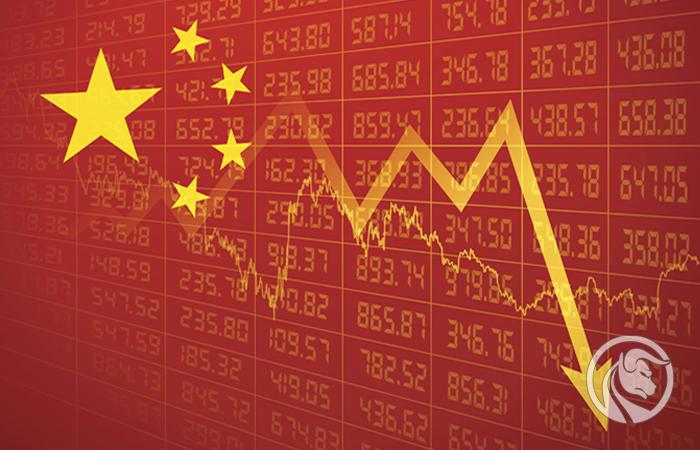China is starting to fight a deflationary slowdown
China is a country that is starting to struggle with the problem, not inflation, but the potential deflation that comes after disinflation flash. Western countries are still in the phase of slowing down price growth in the entire economy, but it is possible that Europe or the US will have to face what is currently happening in China.
China is on the brink of deflation
Annual inflation rate in China rose to 2023% in May 0,2 from a 26-month low of 0,1% in April, but below market estimates of 0,3%. Food inflation picked up from a 13-month low in the previous month (1,0% vs. 0,4%) as a result of further increases in both fruit and cooking oil prices and a more modest decline in the cost of fresh vegetables.
Meanwhile, non-food inflation was flat (0,1%) as further declines in transport (-3,9% vs -3,3%) and housing (-0,2% vs -0,3%) offset increases in healthcare costs (1,1% vs 1,0%) and education (1,7% vs 1,9%).
Core consumer prices, excluding volatile food and energy prices, rose by 0,6% year-on-year after rising 0,7% in April. On a monthly basis, consumer prices fell by 0,2% for the fourth month in a row, compared to estimates of a fall of 0,1%.
Producer price deflation accelerated
By contrast, China's producer prices fell 4,6% year-on-year in May 2023, faster than the 3,6% drop in April and worse than market forecasts of a 4,3% drop. It was the eighth straight month of producer price deflation and the biggest drop since February 2016 amid weakening demand and falling commodity prices.
The decline in the prices of production materials accelerated (-5,9% vs. -4,7%) due to a faster decline in the prices of processing (-4,6% vs. -3,6%), raw materials (-7,7% vs. -6,3. 11,5%) and mining (-8,5% vs. -0,1%). Consumer goods prices also fell (-0,4% vs. 0,2%), with more moderate increases in food (1,0% vs. 0,3%), daily necessities (0,4% vs. 1,4%) and apparel (2,0% vs. 1,1%). At the same time, the cost of durable goods shrank by 0,6%, after falling 2,6% in April. On a monthly basis, producer prices fell by 0,5%, for the second month in a row, after falling by XNUMX% in the previous month.
If such price dynamics continue to be maintained, then deflation CPI in China may come this summer, and it may be even more visible in the fall. The current level of the CPI index is 103 points. In October it amounted to 103,50 points. In January, however, it amounted to 104 points.
China is therefore fighting both deflation and a weak economic recovery, weaker than expected after the lifting of the Covid-19 policy. If they lose it, the country may face the worst-case scenario, i.e. a deflation-induced recession.
Fighting to support demand against too much supply
Nevertheless, recent steps show China's determination. On June 13, 2023, the People's Bank of China (PBoC) unexpectedly lowered the 7-day repo rate by 10 basis points to 1,9%, the first cut since August 2022, as policymakers sought to support economic recovery. It is unusual for the short-term interest rate to be adjusted before the interest rate on annual loans, known as the medium-term loan facility.
This cut took place on June 15. The People's Bank of China (PBoC) has decided to lower its one-year medium-term loan (MLF) rate by 10 basis points to 2,65%. This is the first time in 10 months that the bank has lowered this key interest rate. The PBoC's decision was in line with analysts' expectations after it also cut the seven-day repo rate by 10 basis points. The bank added that the volume of medium-term loans is 237 billion yuan, of which 200 billion yuan is in June.
PBoC Governor Yi Gang last week promised to speed up "countercyclical adjustments" and pledged to "do everything possible to support the real economy" as the recovery in demand lagged behind supply.






















![Forex Club – Tax 9 – Settle tax on a foreign broker [Download the Application] Forex Club - Tax 9](https://forexclub.pl/wp-content/uploads/2024/02/Forex-Club-Podatek-9-184x120.jpg?v=1709046278)
![Trading View platform – solutions tailored to the needs of traders [Review] trading view review](https://forexclub.pl/wp-content/uploads/2024/03/trading-view-recenzja-184x120.jpg?v=1709558918)
![How to connect your FP Markets account to the Trading View platform [Guide] fp markets trading view](https://forexclub.pl/wp-content/uploads/2024/02/fp-markets-trading-view-184x120.jpg?v=1708677291)
![How to invest in ChatGPT and AI? Stocks and ETFs [Guide] how to invest in chatgpt and artificial intelligence](https://forexclub.pl/wp-content/uploads/2023/02/jak-inwestowac-w-chatgpt-i-sztuczna-inteligencje-184x120.jpg?v=1676364263)


![WeWork – the anatomy of the collapse of a company valued at $47 billion [WeWork, part II] wework bankruptcy story](https://forexclub.pl/wp-content/uploads/2024/04/wework-bankructwo-historia-184x120.jpg?v=1711729561)
![Adam Neumann – the man who screwed up Softbank [WeWork, part AND] adam neumann wework](https://forexclub.pl/wp-content/uploads/2024/04/adam-neumann-wework-184x120.jpg?v=1711728724)





![How to transfer shares to another brokerage office [Procedure description] how to transfer shares to another brokerage house](https://forexclub.pl/wp-content/uploads/2024/03/jak-przeniesc-akcje-do-innego-biura-maklerskiego-184x120.jpg?v=1709556924)

![The most common mistakes of a beginner trader - Mr Yogi [VIDEO] Scalping - The most common mistakes of a beginner trader - VIDEO](https://forexclub.pl/wp-content/uploads/2024/03/Scalping-Najczestsze-bledy-poczatkujacego-tradera-VIDEO-184x120.jpg?v=1711601376)
![Learning patience: No position is also a position - Mr Yogi [VIDEO] Scalping - Learning patience - No position is also a position - VIDEO](https://forexclub.pl/wp-content/uploads/2024/03/Scalping-Nauka-cierpliwosci-Brak-pozycji-to-tez-pozycja-VIDEO-184x120.jpg?v=1710999249)
![When to exit a position and how to minimize losses - Mr Yogi [VIDEO] Scalping - When to exit a position and how to minimize losses - VIDEO](https://forexclub.pl/wp-content/uploads/2024/03/Scalping-Kiedy-wyjsc-z-pozycji-i-jak-minimalizowac-straty-VIDEO-184x120.jpg?v=1710336731)

















